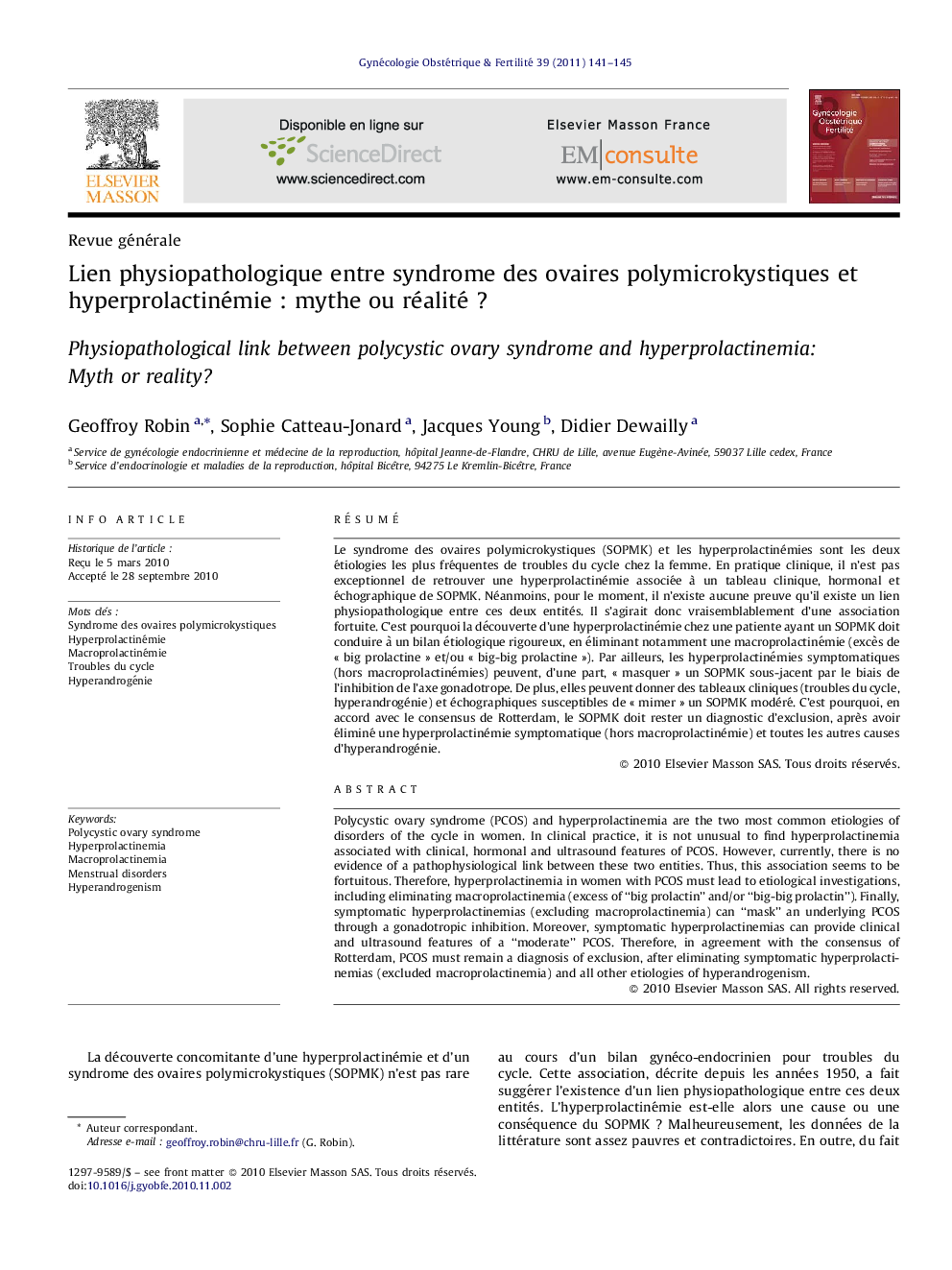| Article ID | Journal | Published Year | Pages | File Type |
|---|---|---|---|---|
| 3950389 | Gynécologie Obstétrique & Fertilité | 2011 | 5 Pages |
RésuméLe syndrome des ovaires polymicrokystiques (SOPMK) et les hyperprolactinémies sont les deux étiologies les plus fréquentes de troubles du cycle chez la femme. En pratique clinique, il n’est pas exceptionnel de retrouver une hyperprolactinémie associée à un tableau clinique, hormonal et échographique de SOPMK. Néanmoins, pour le moment, il n’existe aucune preuve qu’il existe un lien physiopathologique entre ces deux entités. Il s’agirait donc vraisemblablement d’une association fortuite. C’est pourquoi la découverte d’une hyperprolactinémie chez une patiente ayant un SOPMK doit conduire à un bilan étiologique rigoureux, en éliminant notamment une macroprolactinémie (excès de « big prolactine » et/ou « big-big prolactine »). Par ailleurs, les hyperprolactinémies symptomatiques (hors macroprolactinémies) peuvent, d’une part, « masquer » un SOPMK sous-jacent par le biais de l’inhibition de l’axe gonadotrope. De plus, elles peuvent donner des tableaux cliniques (troubles du cycle, hyperandrogénie) et échographiques susceptibles de « mimer » un SOPMK modéré. C’est pourquoi, en accord avec le consensus de Rotterdam, le SOPMK doit rester un diagnostic d’exclusion, après avoir éliminé une hyperprolactinémie symptomatique (hors macroprolactinémie) et toutes les autres causes d’hyperandrogénie.
Polycystic ovary syndrome (PCOS) and hyperprolactinemia are the two most common etiologies of disorders of the cycle in women. In clinical practice, it is not unusual to find hyperprolactinemia associated with clinical, hormonal and ultrasound features of PCOS. However, currently, there is no evidence of a pathophysiological link between these two entities. Thus, this association seems to be fortuitous. Therefore, hyperprolactinemia in women with PCOS must lead to etiological investigations, including eliminating macroprolactinemia (excess of “big prolactin” and/or “big-big prolactin”). Finally, symptomatic hyperprolactinemias (excluding macroprolactinemia) can “mask” an underlying PCOS through a gonadotropic inhibition. Moreover, symptomatic hyperprolactinemias can provide clinical and ultrasound features of a “moderate” PCOS. Therefore, in agreement with the consensus of Rotterdam, PCOS must remain a diagnosis of exclusion, after eliminating symptomatic hyperprolactinemias (excluded macroprolactinemia) and all other etiologies of hyperandrogenism.
